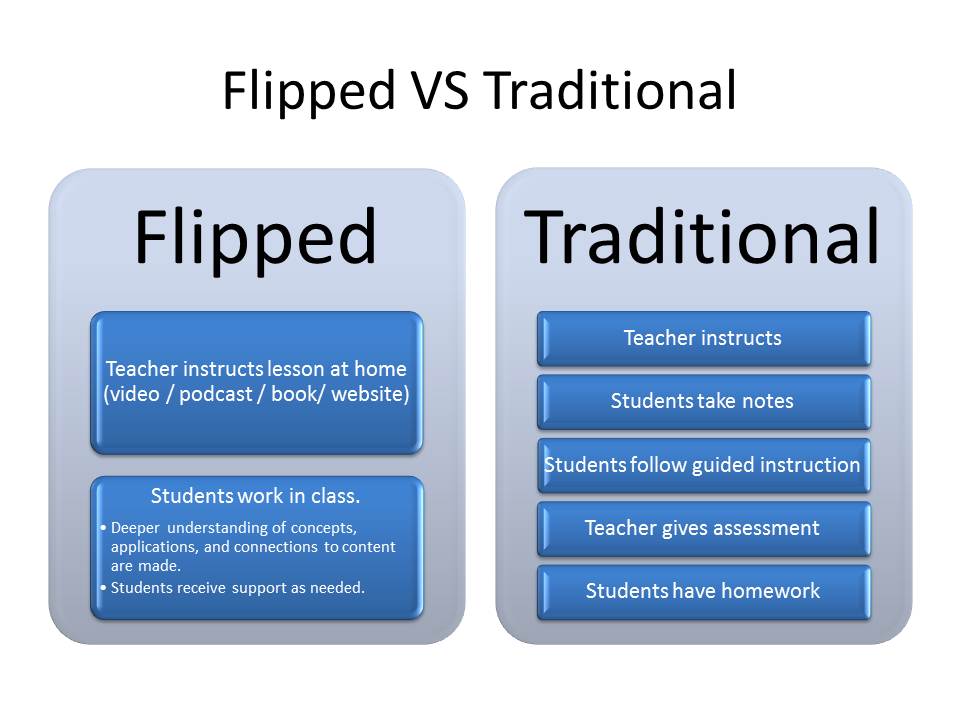Many educators are experimenting with the idea of a flipped classroom model. So what is it and why are educators talking about it? The flipped classroom model encompasses any use of using Internet technology to leverage the learning in your classroom, so you can spend more time interacting with students instead of lecturing. This is most commonly being done using teacher created videos (vodcasting) that students view outside of class time.
It is called the flipped class because “lecture” is done at home and what used to be homework is now done in class. Students watch these lectures, videos, and vodcasts at home on their own pace, communicating with peers and teachers via online discussions and e-mail. Then, the students apply knowledge gained at home and concepts are brought to life in the classroom with the help of the instructor. Let’s take a look at myths and realities of the flipped classroom model.
The Flipped Classroom is NOT:
- A synonym for online videos. When most people hear about the flipped classroom model, all they think about are the videos. It is the the interaction and the meaningful learning activities that occur during the face-to-face time that is most important.
- About replacing teachers with videos.
- An online course.
- Students working without structure.
- Students spending the entire class staring at a computer screen.
- Students working in isolation.
The Flipped Classroom IS:
- A means to increase interaction and personalized contact time between students and teachers.
- An environment where students take responsibility for their own learning.
- A classroom where the teacher is the “guide on the side, “not the “sage on the stage.”
- A blending of direct instruction with constructivist learning.
- A classroom where students who are absent due to illness or extra-curricular activities such as athletics or field-trips, don’t get left behind.
- A class where content is permanently archived for review.
- A class where all students are engaged in their learning through constant practice and application.
- A place where all students can get a personalized education.
This post was originally published The Daily Riff July 2011.

